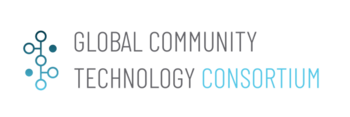Smart Replicable Solutions to Water-Energy Nexus Challenges
| Smart Replicable Solutions to Water-Energy Nexus Challenges | |
|---|---|

| |
 Water-Energy Nexus Challenges | |
| Team Organizations | DC Water Cleveland Water Alliance Global Quality University of California Irvine CB&I Federal Services Roietronics Senet Senformatics Graphet Information Technology and Engineering |
| Team Leaders | Sudhir Kshirsagar |
| Participating Municipalities | Cleveland OH |
| Status | Ready for Public Announcement |
| Document | None |
Description
The goal of this action cluster is to provide innovative solutions for managing drinking water, wastewater, stormwater and source water resources efficiently and effectively.
Challenges
- Cloud-based analytics, physics-based or just statistical, of environmental water data is in a development stage. Solutions that leverage the cloud architecture of worker machines that interact with distributed storage are not widely available. Enhancing existing solutions and developing new solutions will be a key challenge.
- Selection and exploration of appropriate communications technologies will present some difficulties. The environmental sensors typically need to be ultra-low power devices that run on batteries for a long time. They will have to be coupled with appropriate communications backbones that support reliable transmissions over more than a mile. Some of these backbones are just beginning to emerge, and choosing pathways that replicable in multiple cities will a challenge.
- The utilities are typically under-staffed and their personnel have several tasks related to keeping the business fully functional. The amount of time needed to explore the smart solutions that provide future benefits has to be carefully balanced against the time required to manage the current needs.
Solutions
The smart decisions that balance energy usage with desired water quality and quantity will be supported through the development of cloud-based analytics that is driven with the “Big Data” from distributed array of environmental sensors. These “Internet of Things (IOT)” environmental sensors will be used to both monitor and control the environment. The new data will be supplemented with the data from the existing infrastructure such as SCADA historian databases and meter data. Additional data needs will be examined carefully to reduce their impact on operations. For example, water meter data is usually collected on a daily basis to prolong the battery life whereas the same data may be needed at five-minute intervals to generate an accurate demand picture. Innovative approaches that provide additional data through low-cost sensing and citizen participation will be explored.
Major Requirements
- Define a focus area for each of the water sectors, e.g., leak detection for drinking water, run-off reduction for stormwater, overflow reduction for wastewater. The municipal partners will play a major role in selecting these areas.
- Define the energy related impacts of the potential solutions. For example, the leak reductions will reduce the total water pumped, and thereby reduce the pumping energy footprint. Some solutions may be more energy-intensive but provide better overall outcomes.
- Define the analytics needed to address each area and the data required to support the analytics.
- Select the sensors and the backbone needed to gather the data. The existing SCADA network may provide a portion of the data, and careful integration of the network will be required to address security concerns.
- Develop novel computer network synthesis approaches that create a best-of-the-breed solution through the integration of existing high speed backbones such as fiber-optic with low-power wide area networks.
- Develop software and hardware solutions that can be widely deployed and potentially open-sourced.
Performance Targets
| Key Performance Indicators (KPIs) | Measurement Methods |
|---|---|
|
All methods will involve the establishment of an existing baseline for each of the performance targets defined earlier.
|
Standards, Replicability, Scalability, and Sustainability
- The lack of standards for data exchange of environmental data is a major issue. There is a significant body of work mainly related to the XML-based exchange of source water data, and the US EPA is relying on Environmental Sampling, Analysis and Results Data Standard (ESAR) and Water Quality Exchange (WQX). The Standard Energy Efficiency Data (SEED) Platform is used by DOE. However, there are no standards for the “Smart City Sensor Data.” Existing data exchange formats are mainly driven by the capabilities of the underlying transmission protocols. The commercial web services have adopted “REST with JSON payload” as their standard, and the environmental web services will need to be compatible with these commercial services so that all data, whether public or commercial, can be easily consumed. This project will develop web services that support “REST with JSON” as their public end-points. It will also develop draft standards for data packet definitions for the JSON datasets. This will be a critical piece of this work because JSON format can be interpreted in a variety of ways, and different interpretations can result in incompatibilities. The REST/JSON API will be defined to promote integration with the existing standards.
- The key to replicability of the project achievements will be ensured through the development of a solid workflow that can be re-executed with minimal interactions with original stakeholders. Such a workflow will require the development of plug and play software and hardware to the extent feasible. The scalability of the solutions will be achieved through the deployment of distributed sensors, edge computing gateways and robust cloud backbones. A collaborative cloud-based platform to share learnings will support sustainability of the solutions.
Cybersecurity and Privacy
TBD
Impacts
The economic impact will be generated through the creation jobs in the areas of deployment and operations of the massive environmental sensor networks. The energy savings will be achieved through smart operations the promote efficiency and through demand management. The water conservation through leak detection has enormous implications for both sustainability and energy usage. Improved water quality management will support the goals in several areas, including the Safe Drinking Water Act (SDWA) and the source water protection mandates. All efforts to provide sustainable water resource management promote health through better water quality and improve well-being through better water recreation opportunities.
Demonstration/Deployment
- Phase I Pilot/Demonstration:
Three pilot projects will be carried out that will demonstrate the feasibility of the proposed approach in four vertical domains: drinking water, wastewater, stormwater and source water. These projects will share a common infrastructure for cloud computing and visualization, distributed sensing and low-power wide area network connectivity, and smart edge computing. The team will carry out core research to support the disruptive approaches needed to meet the project goals. Some level of KPI gathering will be carried out during this phase. The projects will be based on the critical needs of the municipal partners. Additional funding mechanisms will be explored to support the core activities during Phase II.
- Phase II Deployment:
Learnings from the pilot projects will be applied to high priority areas for each municipal partner to define larger projects with measurable impacts that can be completed in one year. The replicability of these projects on a nationwide and worldwide basis will be a major consideration during the design phase. Potential new deployment targets will be identified and mechanisms for the new deployments will be created. A collaborative framework will be established to allow the team to disseminate the solutions and the knowledge to a larger audience.